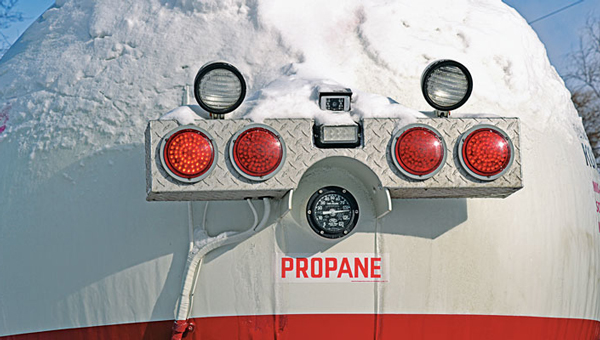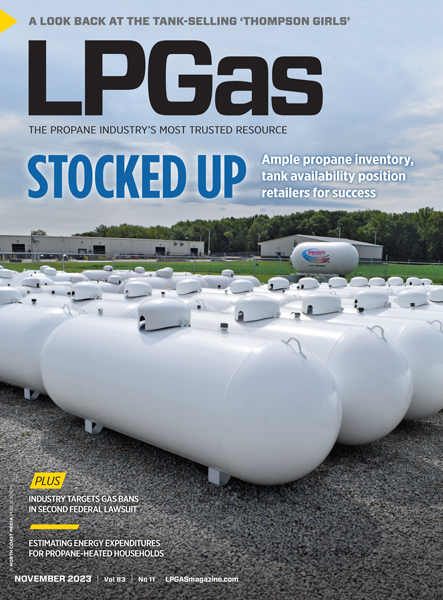|
|
|
THIS WEEK'S TOPIC: PROPANE INVENTORY |
|
|
|
EIA to provide new propane data point |
|
The U.S. Energy Information Administration (EIA) recently delayed providing its Weekly Petroleum Status Report for Nov. 3. It provided the data for that week and the week ending Nov. 10 on the same day last Wednesday. As part of the system administration changes that were the reason for the delay, it added a new propane data point that we are happy to see. It will now provide “ready for sale” propane inventories. |
|
|
Ready-for-sale inventory would include the three grades of propane HD-5, HD-10 and commercial grade that will be of primary interest to readers of Trader’s Corner. HD-5 specification propane has up to 5 percent propylene and is the proper specification for use in engines. HD-10 has up to 10 percent propylene and works fine for heating applications but gets too sticky in motor fuel applications. Commercial grade need only have enough propane to maintain a flame and is in general only used in industrial applications. |
|
To understand the importance of the change we need to review how propane inventory has been reported and perhaps best to do a short review of propane production to better understand the reporting mechanism.
The chemical formula for propane is C3H8. That combination of three carbon and eight hydrogen molecules makes propane. Propane is underground mixed with a lot of other carbon and hydrogen molecules that are connected in ways to make all kinds of products once processed. Collectively, the mixture is known as hydrocarbons. |
|
Hydrocarbon producers, or oil companies, may choose to drill into underground formations they know only hold light hydrocarbons which are commonly referred to as natural gas wells. They include methane, which is what is sold by natural gas utility companies, and other natural gas liquids (NGLs). NGLs are ethane, propane, butanes and natural gasoline.
Oil companies also drill for heavy hydrocarbons. The wells that produce heavy hydrocarbons are known as oil wells. But oil wells almost always have some light hydrocarbons with them that include methane and all the NGLs. |
|
|
In the oil fields, very near the producing wells, as much of the heavy and light hydrocarbons as possible are separated and begin journeys down different processing paths. The methane and NGLs next go to natural gas processing plants while the crude, or heavy hydrocarbons, are sent to refineries.
When the crude is processed at refineries products like gasoline and distillates are yielded. But there is also propane trapped in some of the heavier hydrocarbons. Through the refining process, the propane is removed and generally sold locally by the refinery. This processing leg provides about 12 percent of the U.S. propane supply. The refining process also yields propylene. Propylene has two fewer hydrocarbon atoms in its chemical formula and is used in making plastics and other products. Refineries yield roughly equal parts propane and propylene when refining crude. Keep reading... |
|
|
|
|
RELATED
|
|
|
|
|
|
|
PREVIOUS TOPICS
|
|
|
|
|
|
|
|
|
|
Cost Management Solutions LLC (CMS) is a firm dedicated to the unbiased analysis of the energy markets for the propane industry. Mark Rachal, Director of Research and Publications at CMS, regularly provides insightful looks into various facets of the marketplace. |
|
|
|
|
FROM THE MAGAZINE
|
|
|
|
|
|
|
|
You are currently subscribed to LP Gas as @{Email Name}@ |






















